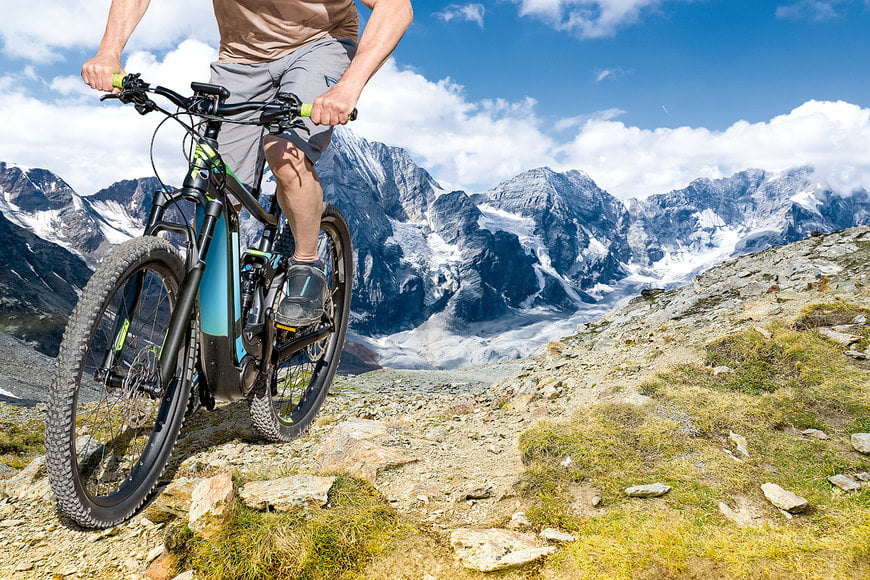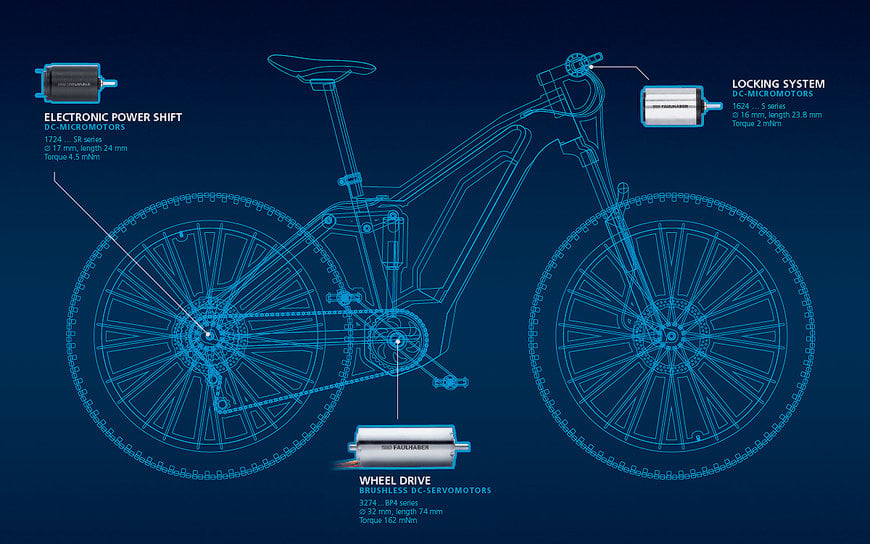www.industryemea.com
18
'19
Written on Modified on
E-Motion on the bike
It goes without saying that the bicycle is a part of locomotion culture in Germany. 97 percent of people in Germany can ride a bike. They use bicycles not only for bike tours in their free time but also on a daily basis for shopping or commuting to work. Due to rising petrol costs and the constantly congested roads at peak times, residents of large cities in particular see the bicycle as a true alternative to the automobile. FAULHABER drives are installed here in various components.

Bike sharing gains ground.
One doesn't need to have a bike of his or her own in order to use one. Especially in cities, a bicycle can today be hired quickly and easily. This saves the cost of purchasing and maintaining a bike and minimises the risk of theft. The rider also enjoys health benefits and helps to reduce CO2 emissions. Sustainability is another advantage of bike sharing worth mentioning: the rate of use is approximately four times higher than an individually used bike.
Locking systems by FAULHABER.
To organise the use of hire bikes, bike sharing providers rely on drives from FAULHABER. For the locking systems of hire bikes, small FAULHABER gear motors are installed in the front fork. Depending on the usage system, the bike sharers can then hire a bicycle at fixed hire stations or even without a station using a smartphone app. There are now various bike hire companies that offer bicycles as well as pedelecs at their stations.
Riding with a tailwind.
A pedelec (pedal electric cycle) assists its riders with an electric motor. The degree of assistance can be set individually and is dependent on the pedal force or cadence of the rider. A bicycle with electric assist is legally equivalent to a regular bicycle. Riders therefore require neither a license plate nor a driving license. The pedelec market has grown significantly in Europe since 2008: in 2016, 1.6 million such bicycles were sold here. Germany leads the market in this sector.

Bicycle drive systems
Bicycle drive systems from Schönaich.
Basically, a pedelec functions like so: a sensor registers that the rider is pedalling and passes this information on to the controller. As a control unit, the controller regulates the battery and ensures that it sends the required current to the motor. As soon as current flows, the pedal assistance of the pedelec engages.
Used as the bicycle drive system for pedelecs, FAULHABER motors ensure the optimum drive. Because the motors from Schönaich are very small in spite of their high performance, they can be installed so cleverly that the pedelec cannot even be recognised as such from the outside. The 3274 … BP4 brushless DC-servomotor in combination with a planetary gearhead is integrated in the frame and the corresponding battery "disguised"as a water bottle. This variant of an electrically assisted bicycle achieves a peak of 330 watts for a duration of approximately five minutes at a time.
Getting into gear.
DC-micromotors of the 1524/1724SR series also ensure the right drive when shifting gears on the bicycle – both with standard bicycles as well as with pedelecs. Electronic shifting systems guarantee efficient riding and increase comfort and safety. At the same time, they reduce wear on the shifting components. Gear shifting is performed with the help of the small servomotors.
Outlook.
The future of the bicycle remains exciting, as further electronic components will change cycling. What direction that could take is demonstrated, for example, by the SmartFaraday Pedal project, developed by a team of students in the Faculty of Engineering at the University of Freiburg. The intelligent bicycle pedal offers a number of functions that help cyclists track their journeys – from performance and route tracking to theft reporting and even an interface for Internet and smartphone. The students won the Cosima competition with this project in 2017. One of their main sponsors is the FAULHABER company.
https://www.faulhaber.com/en/markets/consumer/bike/

